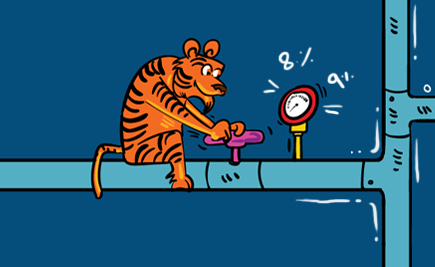The central banking institution in India, the Reserve Bank of India (RBI), controls and regulates the monetary policies of the country. The RBI has the power to determine bank rates and implement different banking policies to ensure price stability and an adequate money supply in the country.
It utilises different tools like repo rate, cash reserve ratio, bank rate, liquidity adjustment facility, etc. to control inflation and regularise monetary policies. We’re going to help you understand how interest rates are determined using these different economic tools, the factors which affect them and the kind of impact they have on our lives. Let’s begin with understanding a few terms.
What is repo rate?
Based on their financial needs, banks borrow short-term funds from the RBI at a fixed rate. This rate is known as the repo rate. Now, if the RBI decides to hike the repo rate, the banks are going to end up paying more interest to the RBI. To compensate for this, they will, in turn, hike the interest rates on any loans they disburse.
What is reverse repo rate?
A reverse repo rate, as the name indicates, is exactly the opposite of the repo rate. This is the rate at which the RBI borrows from banks. If the RBI increases the reverse repo rate, it becomes more lucrative for banks to loan money to the RBI, instead of giving it to other entities. Because of this, there will be a reduction in the amount of liquid cash available with the banks as most banks are likely to lend a major portion of their funds to the RBI.
What is Cash Reserve Ratio?
All banks need to deposit a certain percentage of their funds with the RBI. This is known as the Cash Reserve Ratio (CRR). For instance, if the RBI has fixed a 4% CRR rate, it means that banks need to deposit 4% of their total deposits with the RBI. So an increase in the CRR rate means that banks need to deposit a higher percentage of their total deposits with the RBI. This in turn will reduce their liquidity.
What are basis points?
A basis point is a common unit of measure for interest rates and one basis point is equal to 1/100th of 1%. So, if the repo rate is 7.75% and RBI increases it by 25 basis points, then the new interest rate will be 8%, as 25 basis points is equal to 0.25%.
How does all of this impact us?
Well, when there is an increase in the repo rate or the CRR, the interest rates for Home Loans immediately go up. This may apply to Car Loans and Personal Loans as well.
Conversely, a reduction in the repo rate or CRR will result in a fall in the interest rate for loans.
How does this impact the economy?
Interest rates have a direct influence on the country’s inflation and growth. When interest rates increase, the borrowing power of individuals and of companies decreases, if they are not cash rich. High interest rates also impact Foreign Direct Investment (FDI) as companies are likely to wait for the interest rates to come down before they start investing in a particular sector.
If, on the other hand, interest rates are lower, there will be a greater supply of money in the market and individuals will have greater purchasing power. The downside is that the prices of goods may go up, as demand will surpasses supply in the market.
The RBI closely monitors macro-economic factors in India and across the globe and publishes a monetary policy review every month, along with key revision of rates if any. Inflation, market conditions, foreign investments, and economic growth within India and internationally are some of the factors which are closely analysed by the RBI before it releases its monthly monetary review.
That’s how our apex banking body, the RBI, determines the interest rates for different banks. These are sometimes modified further by the banks depending on their availability of funds and market performance.
